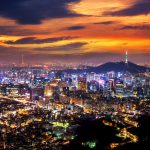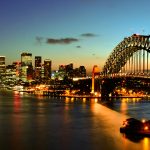
Just inland from the northernmost point of Taiwan (and closest point to mainland China) Taipei is the capital of the renegade Republic of China government, as well as its primary population center and economic hub. With tacit U.S. military backing, a pro-investment capitalist government and strong centralized rule, Taiwan has emerged as a more industrialized and cohesive—albeit much smaller—version of the mainland. Seven decades of peace combined with unfettered access to global resources and markets have made Taiwan one of the world’s fastest growing and globalized economies.
That is all now at risk.
Mainland China’s economic boom of 2000-2016 has utterly overwhelmed Taipei’s international presence (Beijing insists that countries recognize only one Chinese government). The Americans are showing less interest by the day in maintaining the global trade order upon which Taiwan depends. And when President Donald Trump spoke with Taiwanese President Tsai Ing-Wen directly on the phone in contravention of the long-standing One China policy, the United States indicating quite blatantly that the Taiwan issue is a card it is perfectly willing to bring into play.
But make no mistake, to the Americans Taipei is little more than a bargaining chip. Large-scale commitment to Taiwanese independence simply is not something the Americans are willing to engage in unless another major power — say, Japan — folds Taiwan into a far more broadly-reaching deal.
For more on the future of Taiwan, see Chapter 14 in The Accidental Superpower, and Chapter 8 in The Absent Superpower.


